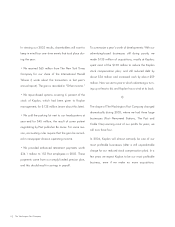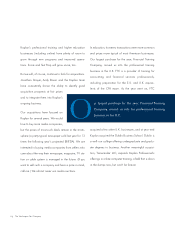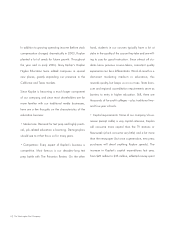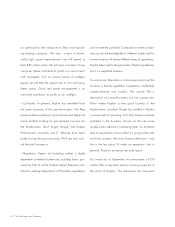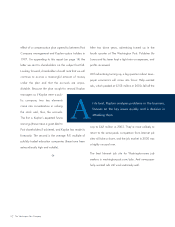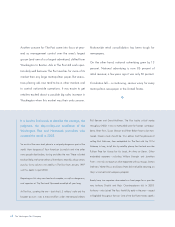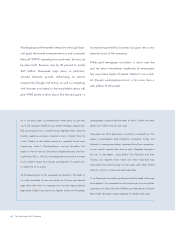Washington Post 2003 Annual Report Download - page 14
Download and view the complete annual report
Please find page 14 of the 2003 Washington Post annual report below. You can navigate through the pages in the report by either clicking on the pages listed below, or by using the keyword search tool below to find specific information within the annual report.
12 The Washington Post Company
may start to spend on a new generation of products to
compete with DBS.
A larger concern: News Corp.’s acquisition of DirecTV
will pose challenges, probably large ones, for all cable
TV companies. We can only promise that under Tom
Might, Cable One will be as observant and as
thoughtful in our response as any cable company, but
competition in this industry will be something.
✧
Newsweek’s sales staff, under publisher Greg Osberg,
had its second straight year of expanding market
share; CEO Rick Smith and president Harold Shain
kept costs low.
Newsweek’s international editions had an even more
difficult year than usual; early in the year, SARS virtually
eliminated advertising in the Asia edition from airlines
and hotels. These are among the Asian magazine’s
largest advertisers. Business rebounded but slowly as the
year went on.
✧
Capital expenditures companywide were unusually
low—$126 million in 2003—largely because Cable
One spent much less than usual. You can expect cap-
ital expenditures to be at least $200 million in 2004.
✧
The company’s pension credit declined in 2003, but, as
these reports have noted for several years, an unusual
amount of our net income results from the excellent per-
formance of our pension plans. Shareholders should be
aware that 15 percent of operating income in 2003
came from pension credit (excluding costs for early retire-
ment programs). Funds generated by our pension
investors must remain in the pension plan, and therefore,
we consider the pension credit of lesser quality than the
rest of our earnings. But it is important for our employees
to know that their pensions are unusually well funded.
The pension credit will decline again in 2004—we’re
estimating about $14 million. A decline in a key assump-
tion, the discount rate, from 6.75 to 6.25 percent, is
responsible for about one-third of the decline.
✧



